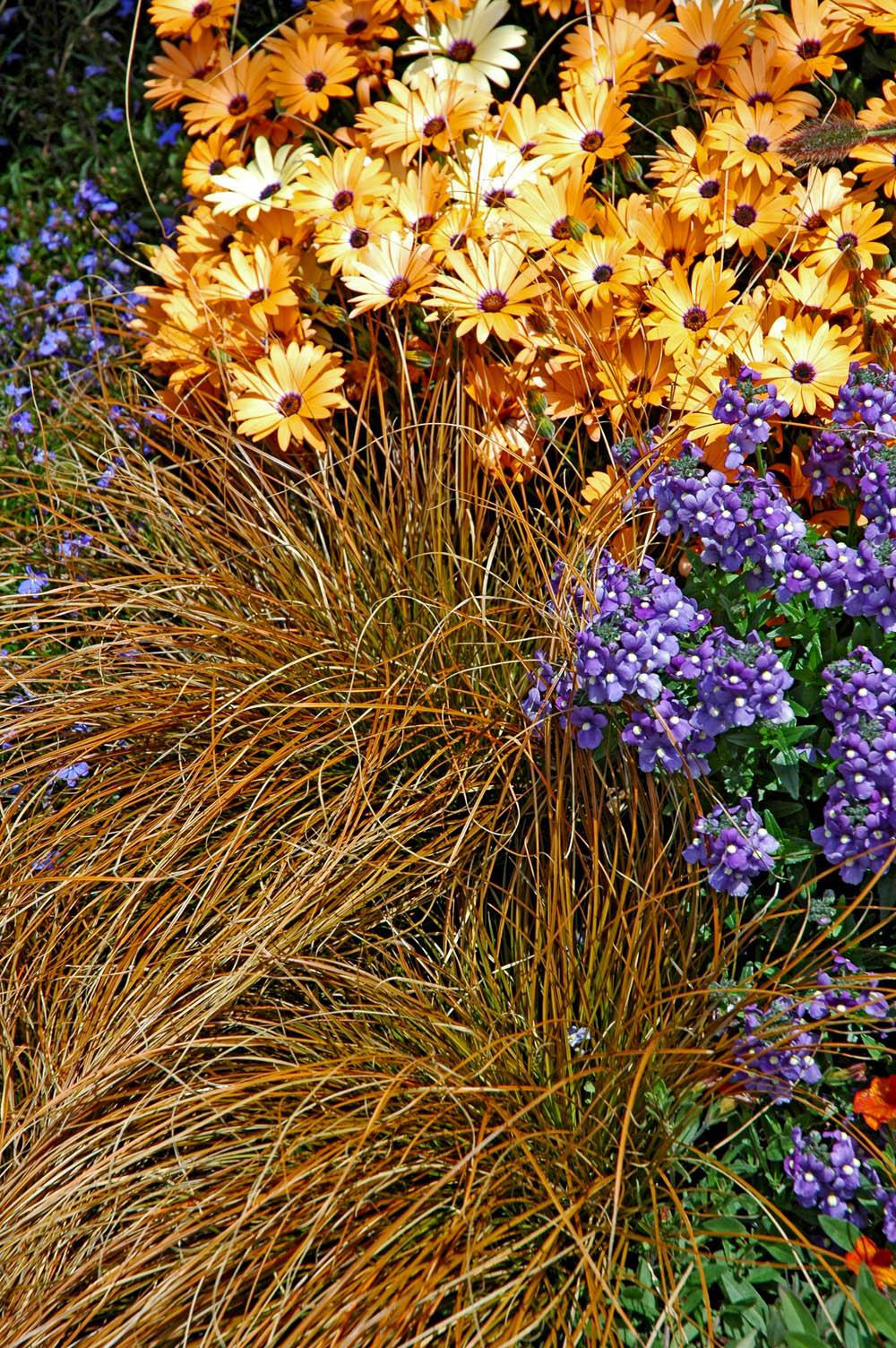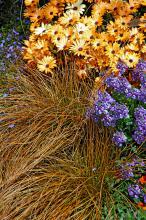Information Possibly Outdated
The information presented on this page was originally released on June 22, 2006. It may not be outdated, but please search our site for more current information. If you plan to quote or reference this information in a publication, please check with the Extension specialist or author before proceeding.
Toffee Twist offers unique garden color
By Norman Winter
MSU Horticulturist
Central Mississippi Research & Extension Center
It is not unusual for a stunning display of flowers to stop people in their tracks, but grasses rarely have that effect. At the Mississippi State University Truck Crops Branch Experiment Station in Crystal Springs, a couple of grass-like plants did just that.
The station was host to the Mid-South Greenhouse Retail Garden Center/Landscape Conference and offered a tour of the facility's ornamental field trials. While there were a lot of impressive flowers, the grasses drew the most attention.
The first was Toffee Twist carex, commonly called copper sedge. Some could say that its beauty is in the eye of the beholder, but I have loved it nearly everywhere I have seen it growing. My wife, Jan, had a different opinion when we were walking down the aisle of a progressive garden center. When she saw the plant she said, “I can't believe they let it die.” No doubt some of you will share that dead plant vision as well.
Toffee Twist will grow in full or part sun. In part sun, the leaves have a mahogany color with some green and red tones giving the grass a dried look even though it is actively growing. In full sun, the foliage is a light coppery-brown that looks even more toasted.
In either setting, the leaves grow to about 18 inches tall and spread 24 inches, developing both a cascading and twisting appearance.
The plant is perennial from zones 7 to 11 and prefers a moist, well-drained soil. In the winter, the leaves develop a coral color, giving the plant year-round texture and interest. At the experiment station, we partnered it with another grass-like plant with dark green leaves so that the copper color really stood out.
One of the prettiest combinations I have ever seen used was in a cool spring garden. It was growing with a golden yellow African daisy, or osteospermum, and Blue Bird nemesia, a snapdragon relative that is starting to catch on.
You could create the same color scheme for a summertime look by combining Toffee Twist with a blue angelonia and a rudbeckia like Prairie Sun or even a zinnia.
The other grass that garnered attention was Quartz Creek juncus, a variety of soft rush. Rushes are aquatic plants, and many are aggressive. Of nearly 225 rush species, the Juncus effusus or soft rush has the most horticultural appeal. Juncus is derived from the Latin word “iungere” that means to join, and refers to the stems' ability to be tied together.
Quartz Creek is cold hardy to zone 4. When you first see the plant, it looks like it has long needles, but a closer examination shows that the stems soft to the touch. Quartz Creek gets about 3 feet tall. It is promoted for shallow planting in water gardens, but it certainly can give an interesting landscape appeal in moist soil. You'll love its spiky texture.
The grasses we admired in Crystal Springs were all planted in August as part of a fall trial. Though they looked good in the fall, they dazzled in early June. I saw them a couple of weeks late and the incredible heat and lack of rain had done them no harm, although they had received supplemental water.
Your garden center may still have a good selection of ornamental grass for sale. If they have none in stock now, they no doubt will bring some in for fall planting. Take advantage of these grasses whenever you find them.




